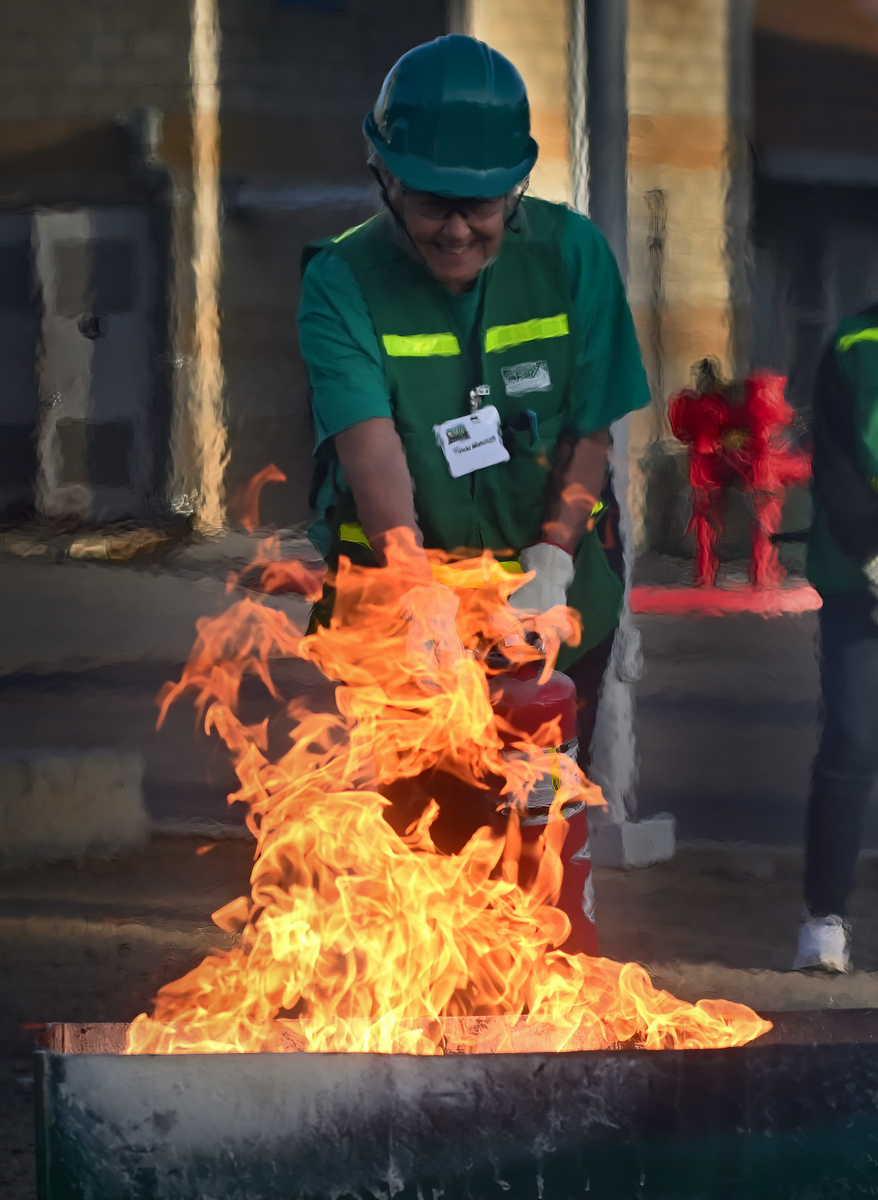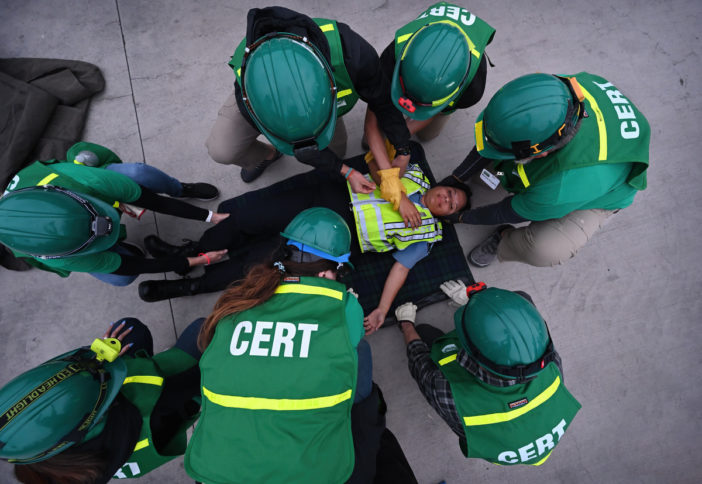As the planet becomes increasingly volatile and fractious each year, September is a good time for individuals and communities to take stock of their preparedness.
Since 2004, September has been observed as National Preparedness Month in the United States. Sponsored by the Federal Emergency Management Agency (FEMA), the month raises awareness and encourages all to take steps to prepare for emergencies in their communities.
Locally, ReadyOC, Orange County’s emergency preparedness resource, stands out.
“ReadyOC is a public outreach effort aimed at educating and empowering Orange County residents, businesses, and the community to better prepare for emergency situations,” the agency states.
The group has launched a Ready to React page where residents can find information, videos, downloadable lists, and links for information on how to build an emergency preparedness kit, how to make plans for various disasters, and sign up for text alerts when disasters happen or are imminent.
Ready to React teaches residents “what to do during those precious moments after a disaster occurs but before first responders can arrive. First responders try to get to the scene as soon as possible, but can be delayed by minutes, hours, or even days, depending on the type and scale of the disaster. Knowing how to be prepared and react can save you and your loved ones,” ReadyOC states.

CERT trainee Vicki Matchett uses a fire extinguisher to put out a fire during a drill at OCFA headquarters in 2022.
File photo by Steven Georges/Behind the Badge
While natural disasters are the purview of ReadyOC, its sister site, SafeOC, helps residents be on guard against terrorism-related activity, threats to public safety, and provide tips on how to prevent unwanted crime. The site’s dual focus is: “to raise public awareness of the indicators of terrorism and terrorism-related crimes. (And) to emphasize the importance of reporting suspicious items (e.g. an unattended bag in a public place) and behaviors (e.g. someone trying to break into a restricted area) to local law enforcement.”
Both sites contain extensive information on how to be aware of and prepare for all manner of potential danger.
In a world where calamity can strike from any direction and at any time, preparedness, awareness and vigilance are watchwords for the modern age. Preparedness month is one way to keep people abreast and bridge the gap between awareness and readiness.
“It’s to remind people of all the things they’re supposed to do and don’t get around to,” said Steve Rhyner, Emergency Operations Coordinator for Santa Ana.
According to a FEMA 2021 national poll , while 92 percent of respondents were aware of the importance of preparedness, only 44 percent claimed to be prepared.
“Being prepared is not only self-service, it’s a public service so we can help each other,” said Christian Erickson, Community Preparedness Officer for FEMA Region 9.
It doesn’t just happen to others
“When it comes to disasters, people think they happen in remote areas,” Rhyner said. “They think it doesn’t happen here, but, yes, it does.”
And emergencies and disasters are spreading.
“Our part of the country is famous for natural disasters,” Erickson said. “We’re going away from a Goldilocks period. It’s now a land of extremes.”
Storms and seasons are becoming extreme, often unexpectedly. The record-breaking winter of 2022-23 that trapped thousands in the San Andreas and San Bernardino mountains, happened in the wake of near-unanimous predictions of a dry and warm season.
Although Orange County emerged relatively intact, in San Clemente the iconic Casa Romantica was imperiled and rail service was halted by landslides, likely caused by the excess rains. This year, forecasters say a “historically strong” El Nino condition, which often puts California in the barrel of the Pacific storm jet stream, is expected.
While the rainy winter dampened the 2022-23 fire season, wildfires continue to exact massive tolls from Hawaii to Canada. Since California started recording fire incidents in 1932, the 10 worst fire seasons have happened since 2000. The seven largest wildfires in California have all occurred since 2018 and six of them since 2020.
Orange County is not immune. The Coastal Fire took out 20 homes in Laguna Niguel in 2022. Earthquakes rumble at a rate of two or three per year that cause moderate damage, while the “big one “is long overdue.
It’s not complicated
Preparedness can seem overwhelming when one contemplates the wide array of potential scenarios. Rhyner said many are under the misconception, “if it’s bad, there’s nothing I can do.”
However, like the journey of 1,000 miles, preparedness starts with a few steps.
“You just have to break it down to simpler tasks,” Rhyner said.
For example, Rhyner said buying water, stocking up on first aid supplies, making sure you have a flashlight with extra batteries and buying a fire extinguisher are four easy things you can do right away. Water tops the list as it’s essential not only for sustaining life, but cooking, cleaning and hygiene.
“You can buy some and just throw it in the closet,” Rhyner said.
The flashlight is critical if the power goes out and darkness descends. You may need light to find and apply first aid as well as other tasks, such as shutting off gas.
First aid supplies and fire extinguishers are self-explanatory.
Erickson stresses mental preparedness, similarly broken down into manageable pieces. He suggests an immediate preparation that can be made is to sign up for an alert system. Locally, residents can sign up for AlertOC for information when disasters hit.
Secondly, Erickson recommends families sit down together and talk out and write down what to do in emergencies and how to stay connected. ReadyOC’s Make a Plan page is a good resource for ways families and individuals can create disaster plans.
Similarly, the site’s Get A Kit page suggests items to consider for go-kits residents can create to be better ready for disasters. Suggestions range from the obvious to the personal.
Residents can also sign up for the ReadyOC newsletter and the SafeOC newsletter to receive local updates, public safety alerts, and tips on how to prepare.
Again, it doesn’t have to be tackled all at once and many groups have worked to make preparation easy and thorough.
“That takes a lot of the mental energy away,” Erickson said, rather than trying to consider everything at once all by yourself.
Other items to consider:
Courses like CERT (Community Emergency Response Teams), provide intensive, next level preparedness and train residents in life-saving, rescue, and organizing techniques. Most cities offer CERT programs and information is available on City websites.
Residents can also discuss strategies for communication, evacuation if necessary, and reunification. Family members can be in many places in the course of a day, making communication vital to know where everyone is at all times. If evacuation is called for, learn evacuation routes and gathering places. Have a plan for how to get back together after a disaster.
A contact list and important numbers should be kept, updated often, and displayed prominently. Those phone numbers should also be entered into all cell phones, along with trusted out-of-town contacts, as it is sometimes easier to call out than to call locally in a disaster.
More information on emergency and disaster preparedness can be found at:
 Behind the Badge
Behind the Badge




